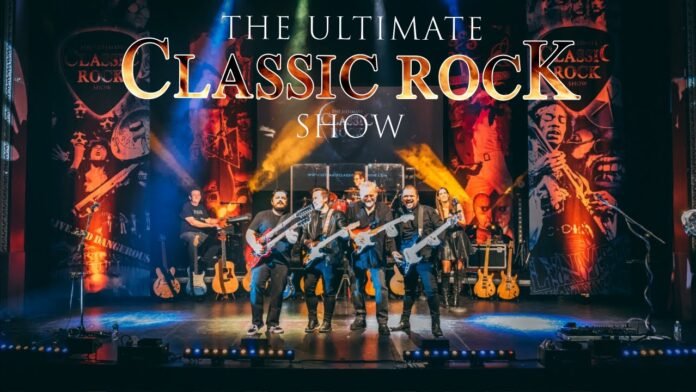Introduction
Classic rock isn’t just a genre; it’s a monumental chapter in the history of music. It’s the soundtrack to revolutions, cultural shifts, and timeless memories. But what exactly is classic rock? Generally, it’s rock music that emerged from the mid-1960s to the 1980s, characterized by its distinctive blend of blues, rock ‘n’ roll, and a sprinkle of psychedelic influence. The importance and influence of classic rock are monumental, shaping not just music, but fashion, lifestyle, and even societal movements.
Origins of Classic Rock
Birth of Rock ‘n’ Roll
Classic rock’s roots dig deep into the early rock ‘n’ roll scene of the 1950s. Artists like Chuck Berry and Little Richard pioneered the energetic and rebellious spirit that defined early rock music. Their influence laid the groundwork for what would evolve into the classic rock we know today.
Influence of Blues and Country Music
The fusion of blues and country music was pivotal in the development of classic rock. Blues brought the soul, emotion, and guitar riffs, while country added storytelling and melody. This blend created a new sound that resonated with a wide audience, setting the stage for the explosive growth of rock music.
Key Eras in Classic Rock
The 1960s: The British Invasion and Psychedelic Rock
The 1960s was a transformative decade, marked by the British Invasion led by The Beatles, The Rolling Stones, and The Who. This era saw the emergence of psychedelic rock, characterized by experimental sounds and mind-bending lyrics. Bands like Pink Floyd and The Doors took listeners on a journey through uncharted musical territories.
The 1970s: Hard Rock and Progressive Rock
The 1970s solidified classic rock as a dominant force. Hard rock bands like Led Zeppelin and Deep Purple pushed the boundaries with powerful riffs and intense live performances. Meanwhile, progressive rock bands such as Yes and Genesis introduced complex compositions and elaborate stage shows, elevating rock music to new artistic heights.
The 1980s: Arena Rock and the Rise of Music Videos
The 1980s brought arena rock and the birth of music videos, thanks to MTV. Bands like Queen and Bon Jovi became larger-than-life figures, with their music videos reaching millions of fans worldwide. The visual element added a new dimension to classic rock, making it more accessible and appealing to a broader audience.
Iconic Classic Rock Bands and Artists
The Beatles
The Beatles are arguably the most influential band in rock history. Their innovative music, from “Help!” to “Abbey Road,” revolutionized the industry and set new standards for artistic expression.
Led Zeppelin
Led Zeppelin, known for their electrifying performances and groundbreaking albums like “Led Zeppelin IV,” became rock legends with their blend of hard rock, blues, and folk influences.
Pink Floyd
Pink Floyd’s “Dark Side of the Moon” and “The Wall” are masterpieces that transcended music, becoming cultural phenomena. Their use of concept albums and elaborate live shows set them apart.
The Rolling Stones
The Rolling Stones, with their rebellious image and enduring hits like “Satisfaction” and “Paint It Black,” have remained rock icons for decades, constantly reinventing themselves.
Queen
Queen’s eclectic style and anthemic songs like “Bohemian Rhapsody” and “We Will Rock You” made them one of the most versatile and beloved bands in rock history.
Defining Classic Rock Albums
“Sgt. Pepper’s Lonely Hearts Club Band” by The Beatles
This album is a milestone in music history, known for its innovative production, eclectic mix of genres, and cultural impact.
“Led Zeppelin IV” by Led Zeppelin
Featuring hits like “Stairway to Heaven,” this album epitomizes the power and mystique of Led Zeppelin’s music.
“Dark Side of the Moon” by Pink Floyd
A landmark in progressive rock, this album’s themes of existentialism and human experience resonated deeply with listeners.
“Sticky Fingers” by The Rolling Stones
With its iconic album cover and a mix of rock, blues, and country, “Sticky Fingers” is a quintessential Stones album.
“A Night at the Opera” by Queen
This album showcases Queen’s versatility, from the operatic “Bohemian Rhapsody” to the hard-hitting “Death on Two Legs.”
Classic Rock’s Cultural Impact
Influence on Fashion and Lifestyle
Classic rock didn’t just influence music; it shaped fashion and lifestyle. From the rebellious leather jackets of the 70s to the psychedelic patterns of the 60s, rock music and its icons set trends that defined generations.
Classic Rock and Social Movements
Classic rock played a significant role in social movements, providing a voice for the counterculture. Songs like Bob Dylan’s “The Times They Are A-Changin'” became anthems for change and protest.
Classic Rock and Modern Music
Legacy and Influence on Contemporary Artists
The legacy of classic rock is evident in today’s music. Modern artists like The Black Keys and Greta Van Fleet draw heavily from classic rock influences, proving that the genre’s spirit lives on.
Classic Rock in Movies and TV Shows
Classic rock’s presence in movies and TV shows has kept its spirit alive. Iconic tracks often serve as soundtracks, enhancing storytelling and connecting with audiences on an emotional level.
Classic Rock Radio and Media
Evolution of Classic Rock Radio Stations
Classic rock radio stations have evolved, but their essence remains. Stations like KLOS and WXRT continue to play the hits, introducing new generations to timeless classics.
Popular Classic Rock Magazines and Websites
Magazines like Rolling Stone and websites like Ultimate Classic Rock provide fans with news, reviews, and deep dives into the world of classic rock.
Collecting Classic Rock Memorabilia
Vinyl Records and Collectibles
Collecting vinyl records has seen a resurgence, with enthusiasts hunting for original pressings and rare finds. Memorabilia like concert posters and vintage T-shirts are also highly sought after.
Concert Posters and T-Shirts
Classic rock concert posters and T-shirts are not just collectibles but pieces of history, capturing the essence of an era.
Classic Rock Concerts and Festivals
Legendary Live Performances
Legendary live performances, such as The Beatles’ rooftop concert and Queen at Live Aid, have become part of rock lore, showcasing the power of live music.
Major Rock Festivals of the Past and Present
Festivals like Woodstock and Glastonbury have been instrumental in celebrating classic rock, bringing together fans and artists in a communal experience.
The Evolution of Classic Rock
Changes in Sound and Production Techniques
The sound and production techniques of classic rock have evolved, from the analog warmth of the 60s and 70s to the digital precision of today. Yet, the core essence of classic rock remains timeless.
Revival and Nostalgia in Classic Rock
There’s a growing revival and nostalgia for classic rock, with tribute bands, reissues, and anniversary tours keeping the spirit alive.
Top Classic Rock Guitarists
Jimi Hendrix
Jimi Hendrix’s innovative playing and electric performances set new standards for guitarists, with songs like “Purple Haze” becoming rock staples.
Eric Clapton
Eric Clapton, known for his work with Cream and his solo career, is revered for his blues-infused guitar style and hits like “Layla.”
Jimmy Page
Jimmy Page of Led Zeppelin combined technical prowess with creative experimentation, making him one of the most influential guitarists in rock history.
David Gilmour
David Gilmour’s emotive playing and melodic solos with Pink Floyd, especially on tracks like “Comfortably Numb,” have left a lasting legacy.
The Role of Women in Classic Rock
Female Rock Legends
Women have made significant contributions to classic rock. Artists like Janis Joplin, Stevie Nicks, and Joan Jett broke barriers and inspired countless others.
Influence and Contributions
The influence and contributions of women in classic rock extend beyond performance to songwriting, production, and shaping the genre’s evolution.
Preserving Classic Rock
Archives and Museums Dedicated to Rock Music
Efforts to preserve classic rock include archives and museums like the Rock and Roll Hall of Fame, which celebrate the history and impact of rock music.
Efforts to Keep Classic Rock Alive
Organizations and fans alike are dedicated to keeping classic rock alive through tribute concerts, educational programs, and community events.
Conclusion
The enduring legacy of classic rock is a testament to its power and influence. Decades after its inception, it continues to resonate with new generations, providing a timeless soundtrack to our lives. Classic rock isn’t just music; it’s a cultural phenomenon that will always hold a special place in our hearts.
FAQs
What defines classic rock?
Classic rock is defined by its origins in the mid-1960s to the 1980s, characterized by its blend of blues, rock ‘n’ roll, and psychedelic influences. It includes legendary bands and artists who have left an indelible mark on music history.
Who is the greatest classic rock band of all time?
This is subjective, but many consider The Beatles, Led Zeppelin, and The Rolling Stones among the greatest classic rock bands due to their influence, innovation, and timeless music.
How has classic rock influenced modern music?
Classic rock has influenced modern music through its pioneering sound, innovative production techniques, and the iconic status of its artists. Many contemporary bands and musicians draw inspiration from classic rock.
What are some must-listen classic rock songs?
Must-listen classic rock songs include “Stairway to Heaven” by Led Zeppelin, “Bohemian Rhapsody” by Queen, “Hey Jude” by The Beatles, “Hotel California” by The Eagles, and “Comfortably Numb” by Pink Floyd.
Where can I learn more about classic rock?
You can learn more about classic rock through dedicated radio stations, magazines like Rolling Stone, websites like Ultimate Classic Rock, and visiting museums such as the Rock and Roll Hall of Fame.

